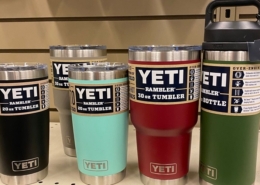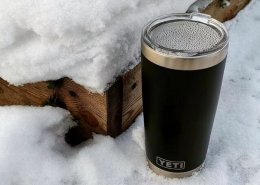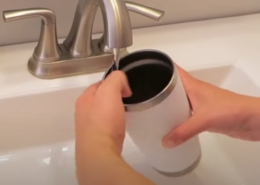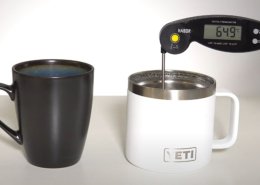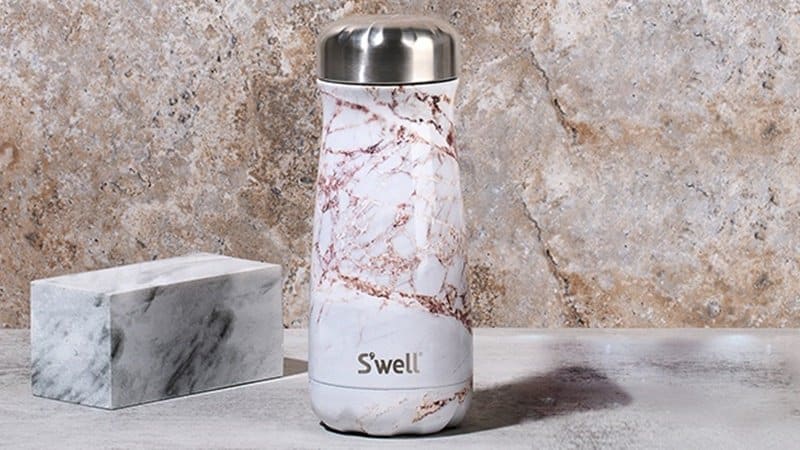What Are Yeti Cups Made of and How Are Yeti Cups Made?
Last Updated on March 11, 2024 by Tina ShaoYeti is a brand that makes high-quality mugs, cups, and water bottles. They’re known for their long-lasting durability and ability to keep drinks cold or hot for long. This guide will tell you everything there is to know about these products and how they’re made.
What are Yeti Cups Made Of?
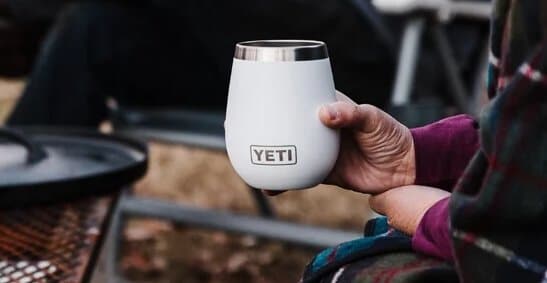
Two ways your Yeti can be manufactured are double-wall vacuum insulated and triple-wall vacuum insulated.
Both are incredibly strong but with slightly different purposes depending on how hot or cold your beverage will be served at room temperature (RT).
The difference is how the walls are formed to create an airless seal around the liquid portion of your drink container and prevent condensation from building up on the outside surface when not used for drinking purposes.
Let’s divide the Yeti cup into body, cup lid, and seal gasket.
- Yeti cup body: The Yeti cup body is made from 18/8 stainless steel( 18% chromium and 8% nickel), more commonly referred to as 304 stainless steel. This grade of stainless steel is corrosion- and rust-resistant, non-reactive with food and beverages, and highly resistant to discoloration and staining. This combination gives the cup its strength and durability and is microwave-safe.
- Yeti cup lid: The lid on your cup is made from Tritan plastic. It has shatterproof properties that make it strong enough for everyday use but still flexible enough to prevent cracking or breaking when dropped accidentally.
- Seal gasket: there’s the solid silicone seal gasket: this part keeps your drink from leaking out while drinking it, but it also protects your Yeti cup if you accidentally drop it in water or any other liquid.
Yeti cups Manufacturing Process
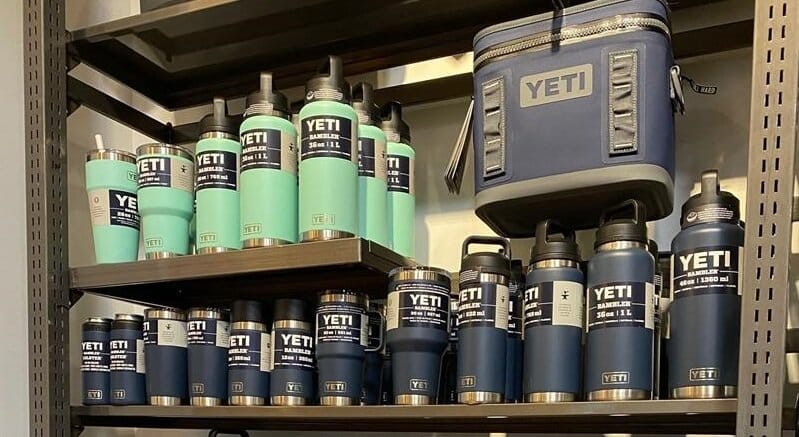
The secret behind the durability of the yeti cup is not simply its construction but also how it’s manufactured. Some water bottle manufacturers use cold forging to create their tumblers, while others employ hot forging.
Cold forging allows for an even distribution of stress during the creation process, resulting in far less distortion than hot forging, which can lead to flaws in your tumbler after repeated use or washing.
However, the manufacturing process of Yeti cups is enjoyable, so let’s take a closer look at it.
- Create a stainless steel tube: To begin manufacturing, you must create a stainless steel tube. The size of this tube will depend on how many cups you want to make at once. If you make one cup and want to use an electric drill, then a 1/2″ diameter steel tube works well.
- Cutting stainless steel tube into the proper length: The next step is cutting your metal into the appropriate size using a hacksaw or grinder. Once this is done, it’s time for tubing bending tools! These tools allow for precision bends so that your final product has an excellent shape and isn’t too difficult to handle when filled with liquid (or other condiments).
- Shape forming: The cup bodies are first shaped by spinning and pressed in the dies and then flow formed into their final shape.
- Mouth forming with threads: After body shaping, the cup mouths are created with a set of lines welded to form three rings (inside, middle, and outside). These rings act as a structural element for the cup design and help prevent stress cracks from occurring during use.
- Matching and welding tumbler mouth: Machining machines have been developed for this purpose that allow for precise matching between two different parts (the cup body and tumbler mouth) before they are welded together by lasers or ultrasonic waves
- Welding tumbler bottom: The cups are made with a welding tumbler bottom. The mug is heated and pressed against a rotating metal disc that melts it. This process fills any defects in the cup.
- Vacuum process: A vacuum press removes any remaining gases within the cup, making it denser. The inner and outer walls of the cup meld together during this phase, which creates a strong bond between them.
- Polishing: Polishing begins with grit blasting or sandblasting to smooth out rough spots on both sides of an unfilled Yeti Cup lid or mug body (depending on what you’re making) and remove scratches caused during manufacturing processes like welding tumbler bottoms, which gives them their shiny look.
- Powder coating: The process of applying a layer of paint to the surface of an object. This can be done by various methods, including brushing, rolling, and spraying. Powder coating involves drying the painted thing in an oven at high temperatures until it is dry and hard.
- Laser engraving logo: The act or process of creating a mark on an object or surface using a laser beam. Yeti cup gets laser engraved with a logo or design you choose—perhaps something like an image or word.
- Assemble caps: Assembling the cap on the cup is a simple process that requires little training and can be done in a factory or warehouse with minimal equipment. Caps for lids are attached to the tops of cups after being individually inspected for quality control purposes (wink). Then, all parts are packed into boxes and shipped to waiting customers around America!
- Packing: Once the cups have been assembled, they must be packed for shipment. This step involves putting adequate packing material around each cup so that it doesn’t move around during transit or get damaged by other objects inside the shipping container.
Also, you can check this video to learn the manufacturing process of Yeti cups:
The manufacturing process of Yeti cups
How Do Yeti Cups Work To Keep Cold/Hot?
The Yeti Tumbler is explicitly designed to keep cold and hot drinks hot. A lot goes into making something like this, so let’s review its science.
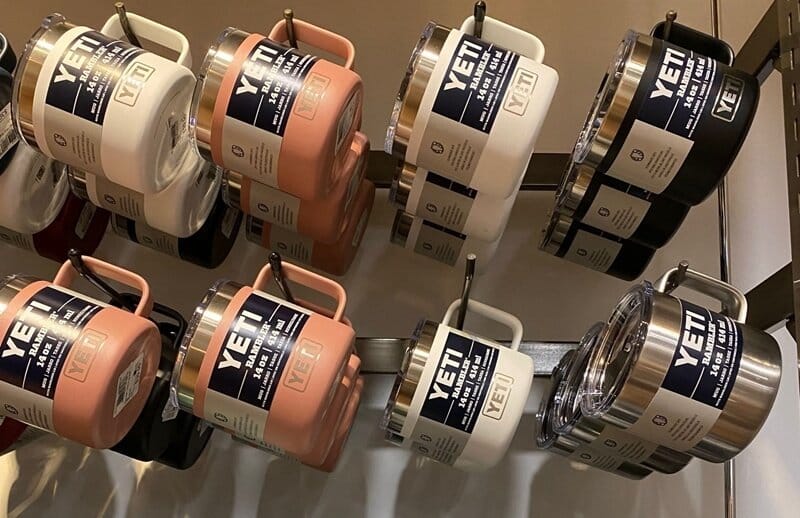
On the inside of its walls, it has a double-wall construction with vacuum insulation between them. These two layers of plastic are separated by air; as any physics student knows, gases expand when heated and contract when cooled.
This property causes your Yeti Tumbler to expand slightly over time as the interior gas warms up on a hot day and shrinks back at night when it gets cooler.
The walls are made from different kinds of plastic explicitly chosen for their thermal properties. On one side is polycarbonate—a strong type of plastic that won’t break even after repeated use, dropping, or hitting against hard surfaces (ask anyone who plays disc golf).
The other side is acrylic, which doesn’t hold up quite well but has insulation properties and allows for coloring with specialized ink (since otherwise, we’d all be carrying around clear tumblers). Finally, the lid is made from a food-grade polymer resin and includes an airtight gasket to ensure that liquid stays put until you remove the cover yourself.
Where Are Yeti Cups Made?
Almost all Yeti cups are made in different parts of China.
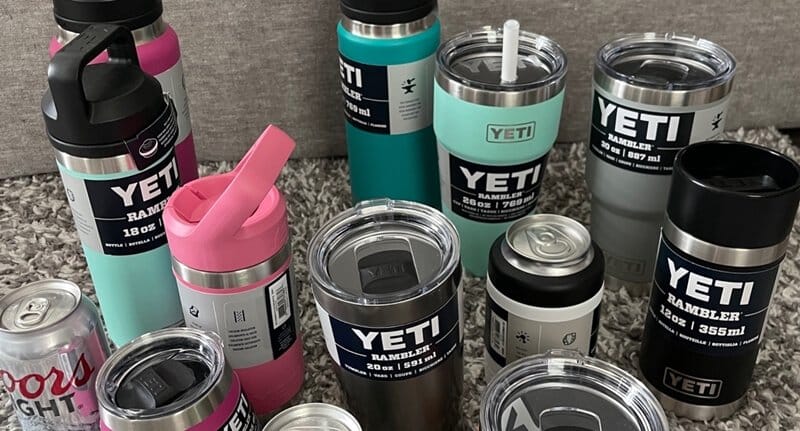
China is one of the best and most renowned countries manufacturing yeti tumblers. This country is known for producing excellent, long-lasting products serving the best.
The low manufacturing costs and the availability of skilled workers in China make it possible for Yeti to produce such a high-quality product at a reasonable price.
Aside from China, other countries have facilities for making presentable, enticing, and helpful yeti tumblers. Each country’s products are usually labeled and designed with their respective origin.
Who manufactures Yeti cups?
So, who makes Yeti cups? The answer is a bit complicated, but it’s also pretty simple. To begin with, YETI cups are made by the same company that makes Yeti coolers.
This company is called Yeti Coolers Inc., which—you guessed it!—makes both coolers and cups. They’re headquartered in Austin, Texas, and their manufacturing operations are based there, too (not all of them; some products are made in China).
However, not every cup manufacturer makes their products at home. Some companies outsource production to other manufacturers or hire factories in countries with lower labor costs than the United States. These practices save these companies money (which they can then pass on to their customers).
Conclusion
Yeti cups are a great option if you are looking for your next camping or hiking cup. The stainless steel construction is durable and rust-free, while the double-wall insulation keeps drinks cold longer than most other brands today.
If you are unsure which Yeti cup is right for you, check out this article, which covers all their sizes, including big gulps!
Also, if you want to customize some insulated stainless steel cups with the same quality as Yeti cups, don’t hesitate to contact Homii Bottles.


